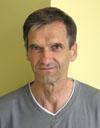Tous droits réservés © NeurOreille (loi sur la propriété intellectuelle 85-660 du 3 juillet 1985). Ce produit ne peut être copié ou utilisé dans un but lucratif.
Marc Lenoir

- Ladrech S, Guitton M, Saido T, Lenoir M. 2004. Calpain activity in the amikacin-damaged rat cochlea. J Comp Neurol. 477:149-60.
- Daudet N, Vago P, Ripoll C, Humbert G, Pujol R and Lenoir M. 1998. Characterization of atypical cells in the juvenile rat organ of corti after aminoglycoside ototoxicity. J Comp Neurol. 401 : 145-62.
- Pujol R , Lavigne-Rebillard M and Lenoir M. 1997. Development of sensory and neural structures in the mammalian cochlea. In: "Development of the Auditory System", E.W. Rubel, A.N. Popper and R.R. Fay (eds) Springer Handbook of Auditory Research, vol. XII, Springer, New-York, pp: 146-192.
- Vater M and Lenoir M. Ultrastructure of the horseshoe bat's organ of Corti. I. Scanning electron microscopy. J Comp Neurol, 1992, 318 : 367-379.
- Lenoir M, Puel J-L and Pujol R. SEM study of the rat cochlear development with emphasis on stereocilia and tectorial membrane. Anat. Embryol., 1987, 175, 477-487.
- Lenoir M, Pujol R. Age-related structural investigation of the Bronx waltzer mutant mouse cochlea: scanning and transmission electron microscopy. Hear Res. 1984, 13:123-34.
- Lenoir M, Shnerson A, Pujol R Cochlear receptor development in the rat with emphasis on synaptogenesis. Anat Embryol. 1980, 160:253-62.
- Lenoir M, Bock GR and Pujol R. Supra-normal susceptibility to acoustic trauma of the rat pup cochlea. J Physiol (Paris). 1979, 75:521-4.
 Français
Français
 English
English
 Español
Español
 Português
Português

